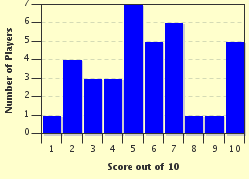Quiz Answer Key and Fun Facts
1. In Roman Times, Zurich was called Turicum, which means what in English?
2. Zurich or Turicum was a relatively small settlement in the Roman Empire but it played an important function within the empire in what capacity? This role would be somewhat ironic nowadays.
3. Though not built until the 10th century, the Wasserkirche Church in Zurich was the 286 AD execution spot for Felix and Regula, Zurich's patron saints. What contribution did Felix and Regula make to Zurich history?
4. Which grandson of Charlemagne founded the Fraumunster Abbey in 852 for his daughter? The Fraumunster would have an increasingly important influence over Zurich in future centuries.
5. The power of Fraunmunster abbey was seriously reduced in 1336 by the establishment of the Zunft zum Kambel, which is what?
6. The mid-15th century conflict known as the Old Zurich War was fought between Zurich and which other entity?
7. Beginning in the 1520s, the Protestant Reformation spread quickly through Zurich and eventually all of Switzerland mainly due to the work of which man?
8. The First and Second Battles of Zurich (in June and September 1799) were part of the French Revolutionary Wars. France lost the city of Zurich in the first battle to which nation only to regain it after the Second Battle?
9. Though it had been something of a tradition in Zurich since Medieval Times, the holiday called Sechselauten became an annual tradition in the late 19th century. Its most iconic event is the Burning of the Boogg, which can be seen as the equivalent to what American holiday?
10. Despite being entirely surrounded by warring nations in World War II, Switzerland managed to maintain its famous neutrality policy and avoided damage completely.
Source: Author
Joepetz
This quiz was reviewed by FunTrivia editor
bloomsby before going online.
Any errors found in FunTrivia content are routinely corrected through our feedback system.
